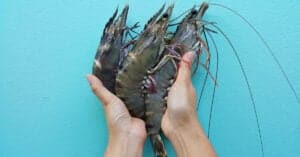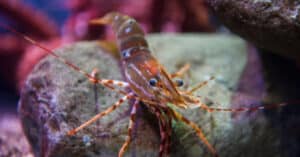Freshwater shrimps are fun, attractive additions to aquariums. They even make wonderful main features of your tank. There are tons of options at various price points. The cheapest shrimp option is the ghost variety, which costs around $.59 each. Special kinds, like the red galaxy pinto shrimp, can go for $30 or more. Below, you’ll find more information on freshwater shrimp prices and the grand variety available in 2024.
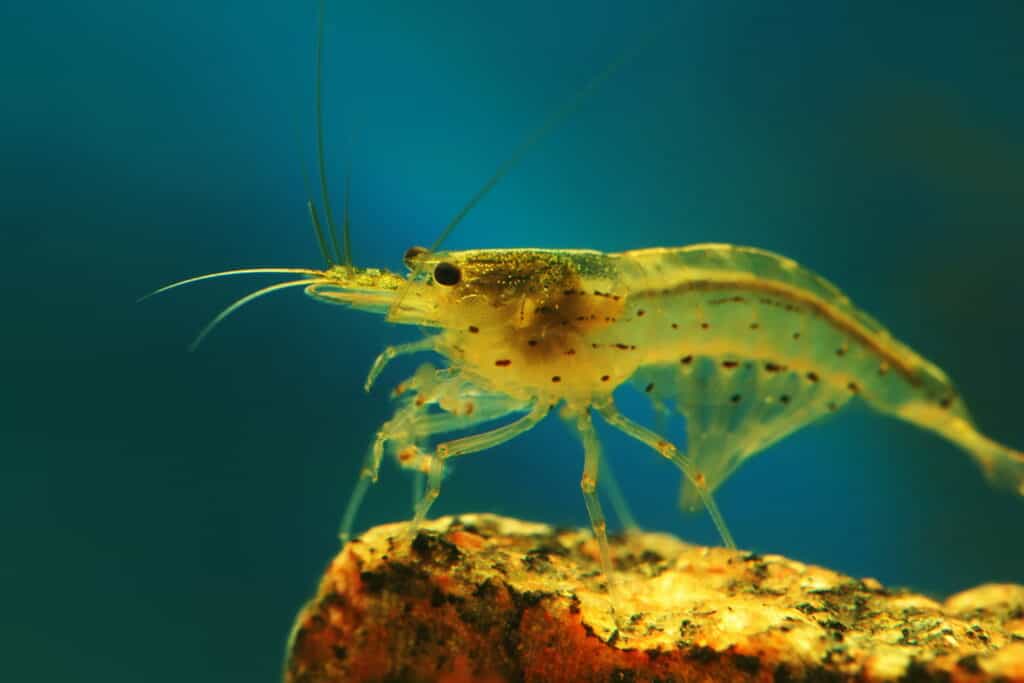
Amano shrimp are relatively easy to find and care for and cost around $5 each.
©Grigorev Mikhail/Shutterstock.com
About Freshwater Shrimp
There are two broad categories of freshwater shrimp: Neocaridina and Caridina. While neither are difficult to care for, they have different requirements, and some might be more suitable for beginner shrimp-keepers. Neocaridinas (or “neos” in the hobby) are a bit hardier and can tolerate a variety of water conditions better than Caridinas, which are more sensitive. Cardinas might be better suited for people with more experience in shrimp keeping. Most commonly, you’ll find Neocaridinas under the name cherry shrimp and their multitude of morphs. They are all the same species, Neocaridina davidi.
Caridina shrimp most often go by the common name crystal shrimp. Like Neocaridinas, they also come in a variety of color morphs. However, they’re a bit more sensitive to changes in the water.
Both groups have a much better chance at surviving when introduced to already established tanks. Additionally, while you can house them together, the two cannot interbreed due to a difference in their reproductive appendage. This is a good thing if you’re trying to breed shrimp, as you won’t have the two lines mixing.
Colors and Prices
The more colorful or unique the morph of the shrimp, the more it will cost. However, if you’re taking care of the shrimp and are mindful of the water quality and conditions, it’s very likely your shrimp will have fry or shrimplets (AKA: baby shrimp) so you can think of it as a one-time investment.
Neocaridina
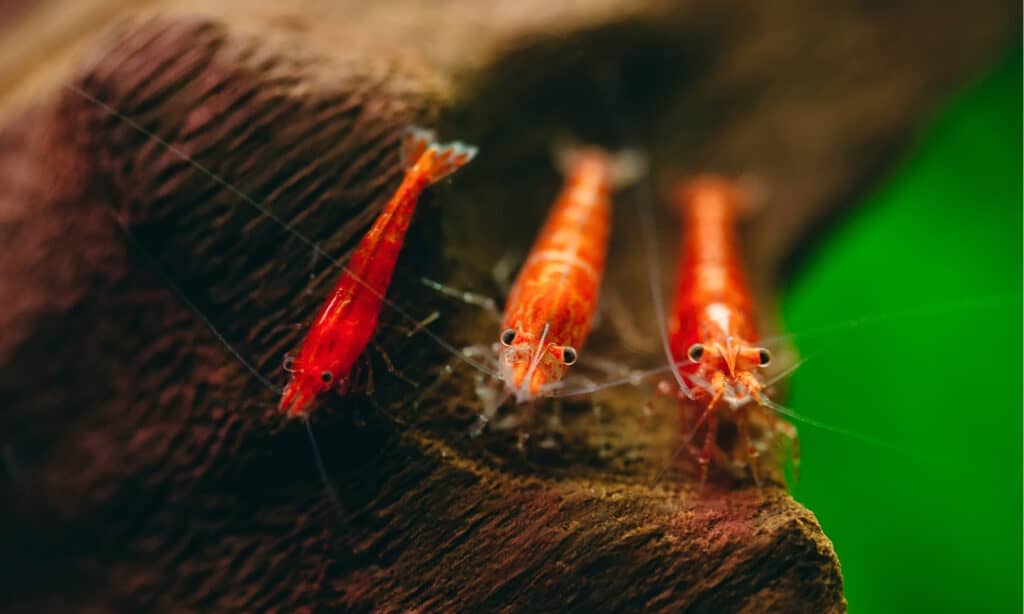
Red cherry shrimp are iconic and usually stand out very well in most aquarium set-ups.
©David Tadevosian/Shutterstock.com
For the beginner aquarist, Neocaridinas are the way to go. These freshwater shrimp prices are typically lower than the price for Caridinas, and there is enough variety in the color morphs to keep newbies and seasoned aquarists interested in the species.
Cherry Shrimp (Fire Red): $25 for 5
Amano Shrimp: $27.50 for 5
Carbon Rili Shrimp: $30 for 5
Black Rose Shrimp: $35 for 5
Blue Dream Shrimp: $37.50 for 5
Green Jade Shrimp: $40 for 5
Caridina
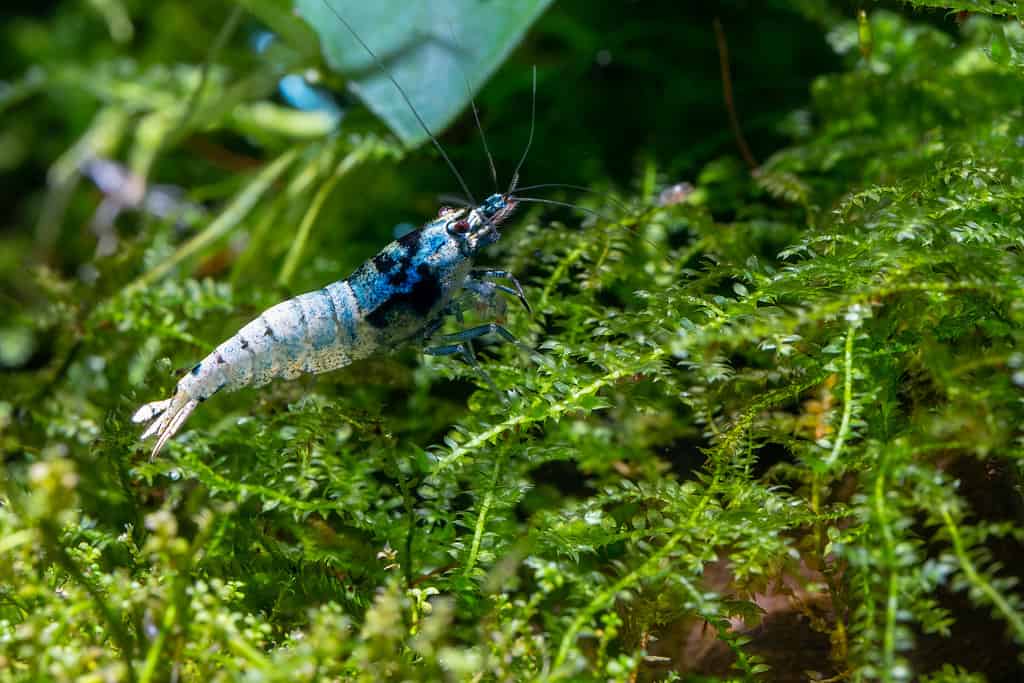
Blue bolt shrimp are gorgeous shrimp; no two have the same markings.
©Narongrit Sritana/ via Getty Images
These shrimps tend to be sold individually and are much more expensive than Neos. However, you might prefer the appearance of these shrimp, as there’s more variety and nuance in the colors and patterns.
Red Fancy Tiger Shrimp: $12 each
Shadow Masura Shrimp: $15.50 each
Extreme Black King Kong Shrimp: $18 each
Extreme Blue Bolt Shrimp: $25 each
Black Galaxy Pinto Shrimp: $25 each
Crystal Red Shrimp (CRS): $27.50 for 5
Red Galaxy Pinto Shrimp: $30 each
Dragonblood Shrimp: $50 each
Freshwater shrimp prices can seem relatively high if you’ve never had shrimp before. The cheapest freshwater shrimp are ghost shrimps (Palaemon paludosus) which sell for $.59 each at PetSmart. They are typically very accessible and can be a good starting point for those who are at the beginning stages of keeping shrimp but aren’t ready to pay $5 or more per shrimp.
Caring for Freshwater Shrimp
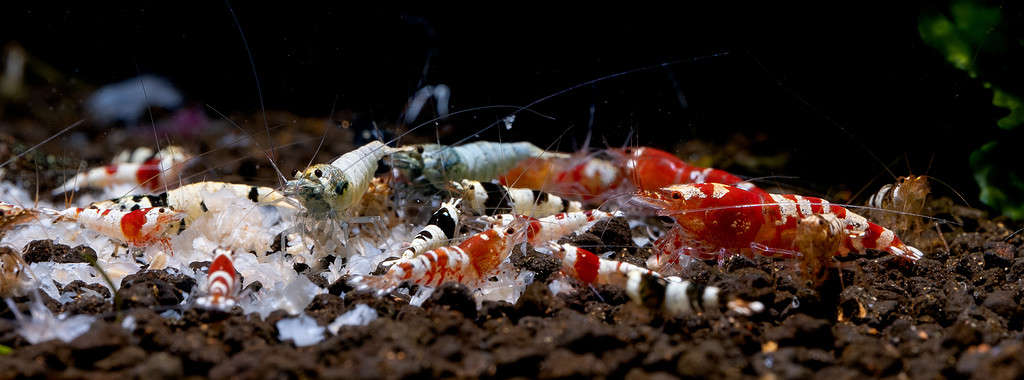
Groups of shrimp can live harmoniously together as long as there is enough food to go around.
©Narongrit Sritana/ via Getty Images
You can almost certainly guarantee successful shrimp keeping if you keep the water clean and within your shrimp’s preferred parameters. Each type of species might have more specific requirements, which can be accessible through your vendor. Here is a general guide for what you’ll want your tank to look like for the given qualities:
Neocaridina
- pH: 6.4 to 8.0
- Water temperature: 65°F to 85°F
- KH: 0 to 10 dKH
- GH: 4 to 14 dKH
Caridina
- pH: 6.0 to 6.8
- Water temperature: 64°F to 76°F
- KH: 0 to 1 dKH
- GH: 3 to 6 dGH
As you can see, there is a lot less room for error with Caridina species than Neocaridina. This is something to keep in mind if you’re deciding what types you want to stock in your aquarium.
Tank Size and Cleaning
Both types of shrimp prefer to live in groups of five or more. You can comfortably house 10 shrimp per gallon of water, though if you have other fish in your tank you will want to make sure you’re sizing up appropriately. Make sure you’re not housing your shrimp with aggressive fish. Otherwise, those fish will have some very expensive treats available to them!
Keeping your tank clean is imperative to keeping your shrimp healthy and alive. A filter, heater, and the proper substrate will help ensure your shrimp can live under the right conditions so they can thrive and possibly reproduce.
Food
Shrimp are algae eaters and tend to feast on tank detritus. However, you should still supplement your shrimp’s diet with shrimp pellets or algae wafers. Take care not to overfeed anything in your tank, as this is a very easy way to spike phosphate and nitrate levels, which could kill your shrimp. The amount of food you’ll need will depend on how many shrimps you have in your tank, and possibly if there are other algae eaters like plecos. A good rule of thumb is to feed your shrimp once a day, but only the amount of food they can eat within three hours.
The photo featured at the top of this post is © Andriy Kotlyarov/Shutterstock.com
Thank you for reading! Have some feedback for us? Contact the AZ Animals editorial team.




